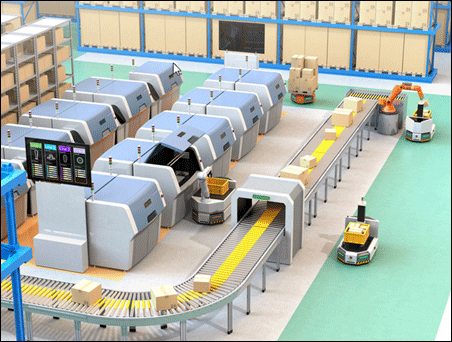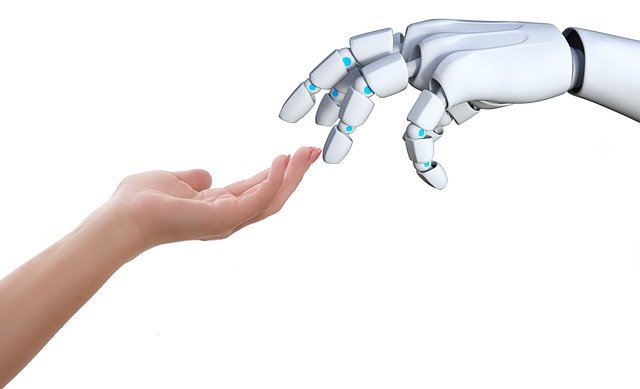Three Areas where Covid-19 is Fast-Tracking Robotics
In today’s world, our lives are changing. From the way we interact with the environment, our friends and family, and even in the workplace. While the measures put into place due to Covid-19 are temporary, the pandemic will likely have a lasting impact on our lives.
Increased automation and reliance on robotic systems will continue to increase. We will see this not only in manufacturing but also in unexpected sectors. Combined with developments in AI and Automation, Robotics training will be important in creating well-rounded technicians able to take on challenges in the workforce. Some people may worry about the impact robots will have on human job prospects. But it is clear that robots are here to stay, and that the demand for knowledgeable and skilled robotics technicians will increase alongside this growth.
Here are three innovative areas where robots are being used—or could be used—during and after Covid-19.
1.Supply Chain & Logistics
The first area in which robots are likely to see an increase in use is in the supply chain and logistics. While robots are already used in this sector, they will become even more popular in a post-Covid-19 world. Increased demand for online ordering and contactless delivery mean that the scene is set for an increase in the use of robotics.

i. Warehouse Picking
As businesses that have traditionally had an in-store shopping focus move operations online, the need for robotics in warehouse picking and shipping will increase. Since Covid-19, robots have increasingly been used for efficient picking. This streamlines processes and decreases the need for an in-person workforce. Current developments allow robots to navigate and maneuver warehouses more efficiently, avoiding obstacles such as their human “colleagues.”
ii. Contactless Delivery
We have already heard a lot about autonomous driving cars, but what about autonomous delivery vehicles? Will our future packages be delivered by drones, self-driving cars, or even delivery robots? This seems likely as demand for online shopping increases, and the need for contactless delivery may be here to stay. In some cities, restaurants are already using food delivery bots to give their customers contactless delivery. The demand is often even too high for the robots to handle!
2. Cleaning
Covid19 has not only increased the number of online shoppers and delivery, but has also necessitated that spaces remain clean and sanitized to prevent further spread of the virus. Robots are able to make up for the increased demand for cleaning and sanitizing, with their ability to work around the clock and without worrying about picking up the virus
i. Grocery Stores
One high risk area for Covid-19 spread is grocery stores. As essential services, grocery stores see constant traffic. Even with decreased capacity, they could become hotspots for the virus’ spread. However, with the introduction of robots using UV lights to disinfect, many of these shops have been able to more easily keep up with increased cleaning requirements. Their ability to work round-the-clock and inability to get sick may expedite their implementation in a post-Covid-19 world.
ii. Hospitals
Another area that requires round-the-clock cleaning are hospitals. While hospitals always follow a strict cleaning regimen, increased demand for sanitization of equipment, hallways, and rooms means that regular staff are not always able to keep up. Using robots with UV ray sanitization and similar technology means that the routine cleaning of high-traffic areas can be managed more effectively. This will free up staff to take on more intense tasks, and increase the available space to help those in need. It will also help curb the spread of Covid-19 throughout all areas of the hospital.
But cleaning is only one area where hospitals have seen an increased use of robots. Hospitals have also been using robotics in a variety of other capacities, including triaging patients, taking temperatures, assisting surgeries, dispensing medication and keeping company.
iii. Home Cleaning
But how could the increase in robot technology affect the average citizen’s every-day life? Robots have already been used as cleaning assistants for many years: as robot vacuums! And this technology continues to improve as they gain popularity. Some people swear by their robotic assistants, and can’t imagine life without them.
Could the sanitization technology used in industrial-strength robots be scaled for individual use in the home? While this technology may be father off, it is well within reason that we may soon be adopting robots for our own personal sanitizing needs. Robots may be used to sanitize your kitchen or bathroom, outdoor clothing and shoes after use, or personal hygiene and food items before they enter your home.
3. Companionship
While robot use is currently most common in an industrial setting, Covid-19 has also increased the speed at which robots are being developed for non-industrial functions. Robots are being trained in human interactions, from empathy to humour, and some even resemble man’s best friend. While nothing can replace human interaction, these new type of robot may help alleviate some of the stress of isolation, and improve the safety of those most at risk.

i.Retirement & Long-term Care Homes
During Covid-19, it has become clear that some of our most vulnerable populations reside at long-care and retirement facilities. And while it is important to keep these residents safe, this is often at the cost of visitors and socialization. Some companies have already begun redirecting robots to care homes, allowing vulnerable residents to communicate with their relatives. The further development of companion robots could help maintain mental health while also keeping at-risk individuals safely distant from potential virus carriers—and curb its spread within these vulnerable populations.
ii. Robotic Pets
Another potential development for robotic companions comes not in human form, but in the form of our four-legged friends. A robotic dog named Spot is being testedat shepherding in New Zealand. Farmers say the AI is still far-off from comparing to their trained dogs, but as this technology develops could it be used not only for working dogs, but companion animals as well? While many may not want a robotic pet, this technology could be useful for service animals, for those with allergies, or as companions to those who might be unable to care for a non-robotic pet.
iii. Entertainment
While truly sentient robots may still be a long way off, developers are making strides in the way that robots interact with humans. This allows them to understand and behave in a more natural way. One skill that is currently being developed is humour; scientists have hosted robot comedy shows, teaching robots about comedic timing and joke structure. Conversational timing, while it is relevant to comedy, could also be put to work in building more natural patterns for every-day interactions between humans and robots. While it may seem like something out of a sci-fi novel, are we getting closer and closer to robots that can believably imitate humans? Could the future of comedy lie in the hands of robots?
Employment
As the use of robots in our lives increases, you may be asking yourself: How will this affect me and my employment? While robots may cause jobs in some sectors to decrease, it will also cause increased demand in other areas. In many industries, the inclusion of robotics will enhance human tasks, allowing easier or faster completion. It is clear that in many areas, the demand for robotics technicians and programmers will increase, as an increased workforce of robots means more robots to repair, train, program, and test. The workforce post Covid-19 is poised to change, and robotics is set to be the way of the future in many industries.
A post-Covid-19 world will see many changes, including a shift towards robotics in a number of industries and throughout our workforces. Now is the perfect time to stay ahead of the curve and build your skills to stay relevant. The George Brown College Robotics Technician Program will help you gain the skills needed to move into this space and grow your career, adapt into a transformed workforce, and continue to move the progress of Robotics forward. For more information on the Robotics Technician Program, speak with a Program Consultant at 1-888-553-5333.
